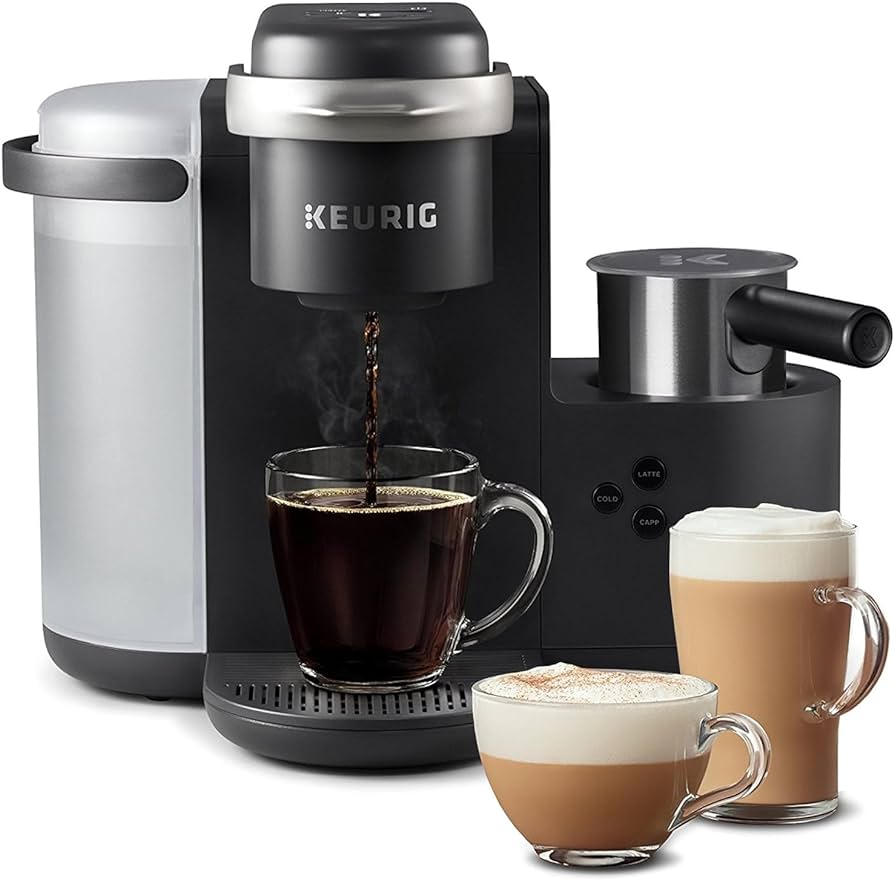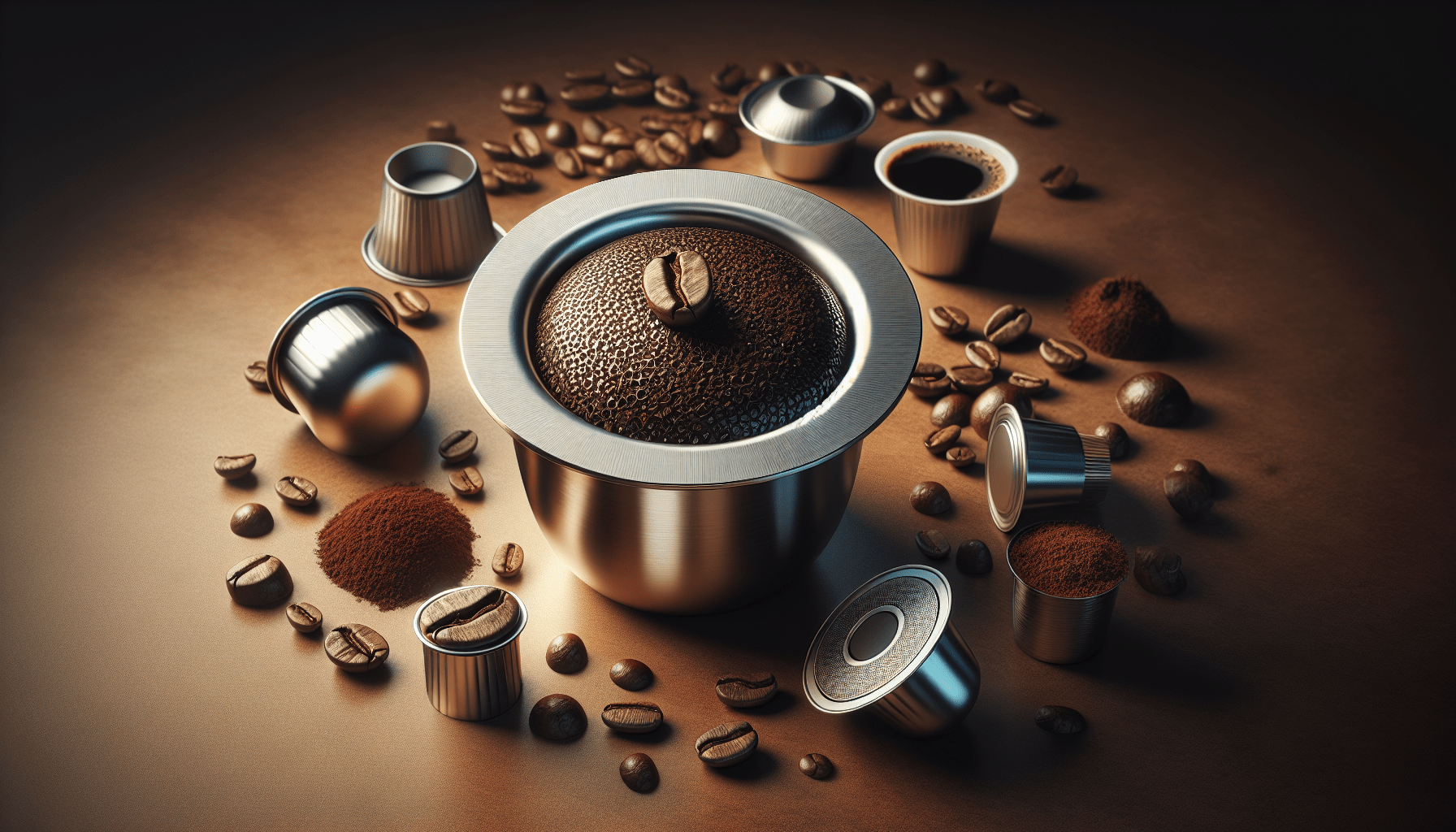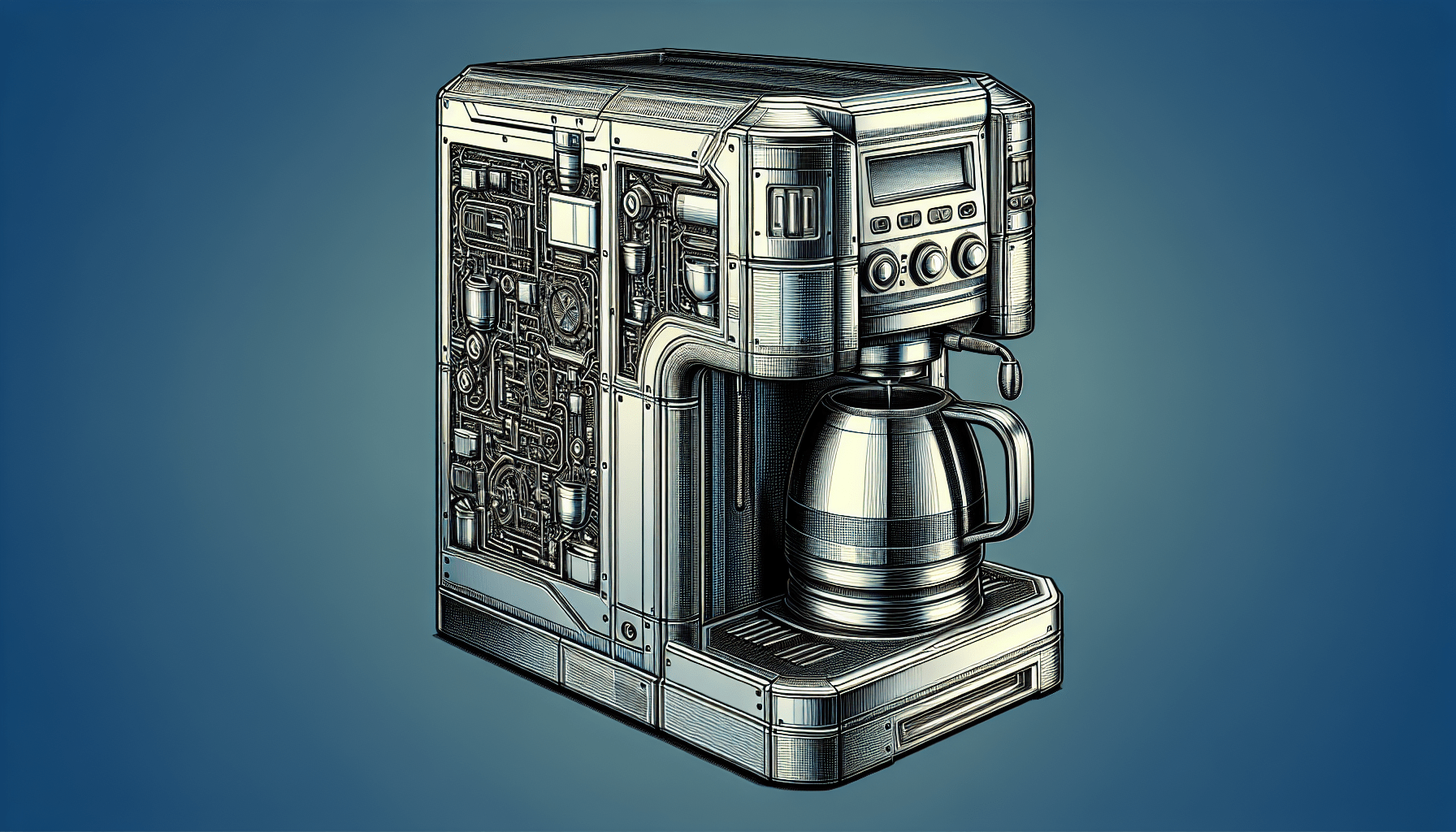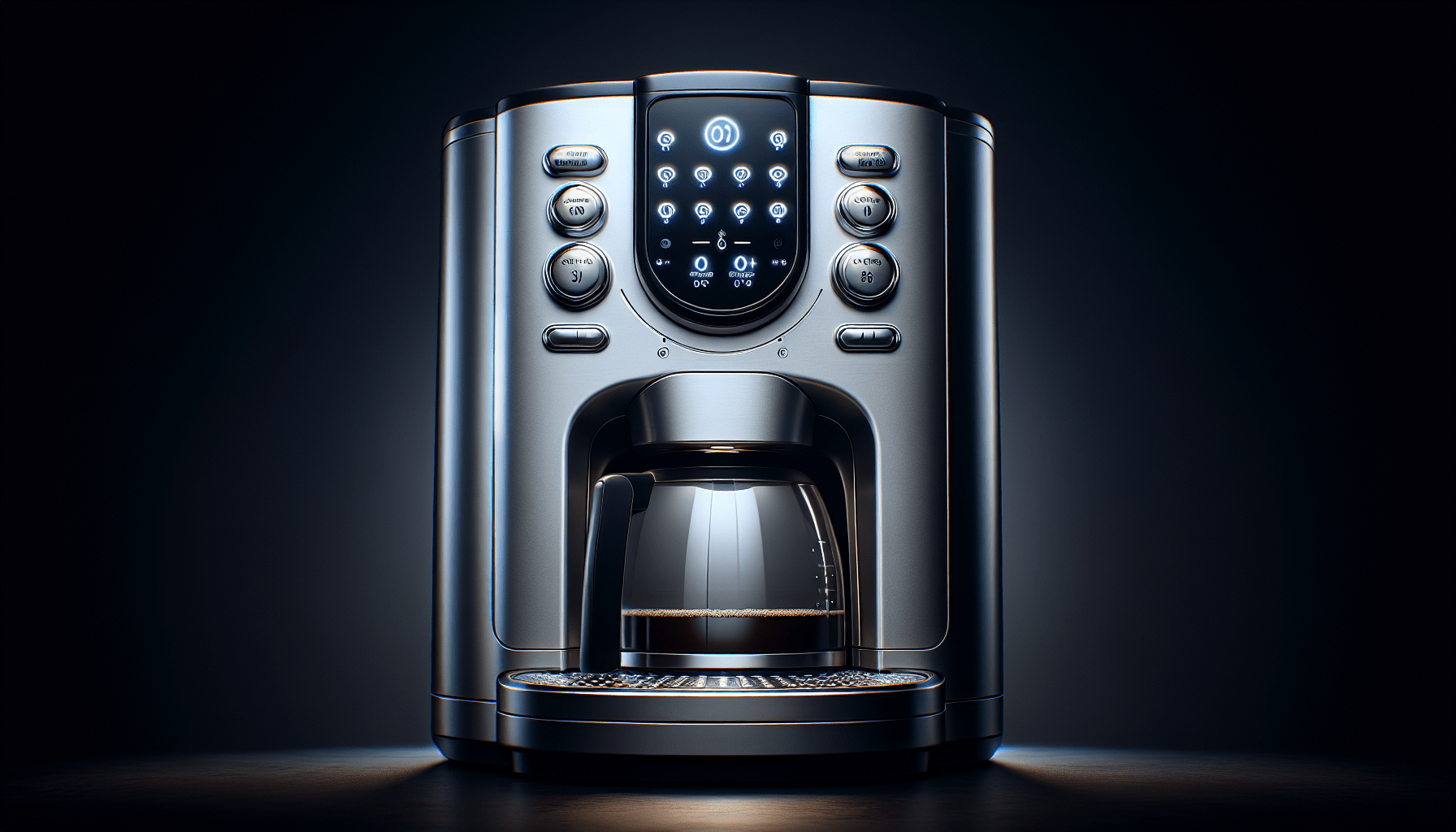Ever wondered if your beloved K-cup coffee maker is disturbing the peaceful ambiance of your morning routine? Well, fear not, because in this article we will explore whether K-cup coffee makers are truly noisy or not. As we sip our morning brew, we will delve into the world of K-cups and discover if these convenient little machines are a pleasant addition to your kitchen or a disruptive force to your tranquil mornings. So grab your favorite mug and join us on this journey to find out the truth about K-cup coffee makers.
Introduction
Exploring the noise factor of K-cup coffee makers
If you’re considering purchasing a K-cup coffee maker, you may have wondered about the noise levels associated with these popular machines. While it’s true that some coffee makers can be quite noisy, there are also models available that offer a quieter brewing experience. In this article, we will delve into the world of K-cup coffee maker noise, discussing the factors that influence noise level, understanding decibel measurements, common noise issues, and strategies to minimize noise. We will also explore customer feedback and reviews, and highlight the quietest K-cup coffee maker models on the market. By the end of this article, you will have a comprehensive understanding of the noise factor associated with K-cup coffee makers, enabling you to make an informed decision when purchasing the right machine for your needs.
Understanding K-cup Coffee Makers
Brief overview of K-cup coffee makers
K-cup coffee makers are single-serve brewing systems that have become incredibly popular due to their convenience and ease of use. These machines are designed to brew a single cup of coffee at a time, eliminating the need to measure coffee grounds or deal with messy coffee filters. K-cup coffee makers use pre-packaged pods, commonly known as K-cups, which contain the perfect amount of coffee grounds for a single serving. The K-cup is inserted into the machine, and with the press of a button, hot water is forced through the K-cup, extracting the coffee and delivering a fresh cup of brewed coffee in a matter of seconds.
How they work
K-cup coffee makers operate using a combination of electrical and mechanical components to deliver a seamless brewing experience. When the machine is turned on, it goes through a preheating process to ensure that the water used for brewing is at the optimal temperature. Once preheating is complete, the user selects the desired cup size and places a K-cup into the designated holder. When the brew button is pressed, the machine punctures the K-cup, allowing hot water to flow through it and extract the coffee. The brewed coffee then flows into a cup or mug placed below the dispenser. Some models even offer additional features such as programmable brewing settings and strength control.
Advantages of using K-cup coffee makers
There are several advantages to using a K-cup coffee maker. Firstly, the convenience factor cannot be understated. With a K-cup coffee maker, you can have a fresh cup of coffee whenever you want, without having to brew an entire pot. This is particularly beneficial for individuals who may be the sole coffee drinkers in their household or for those who prefer a variety of coffee flavors and blends. Additionally, K-cup coffee makers are incredibly easy to use and require minimal cleanup. With no coffee grounds or filters to deal with, you can simply dispose of the used K-cup and enjoy your coffee. For busy individuals or those who value efficiency, the simplicity of a K-cup coffee maker is a major advantage.
Factors Influencing Noise Level
Components affecting noise production
There are several components within a K-cup coffee maker that can contribute to the overall noise production. These components include the grinder, the water pump, the heating element, and the dispenser mechanism. Each of these components plays a vital role in the brewing process but can also generate noise when in operation. Understanding how these components function and interact with one another can help explain why some K-cup coffee makers are quieter than others.
Types of noise generated
The noise generated by a K-cup coffee maker can typically be categorized into three main types: grinding noise, pump noise, and mechanical noises. Grinding noise occurs when the coffee beans are being processed within the machine. This noise is often heard at the beginning of the brewing process and can vary in intensity depending on the quality and design of the grinder. Pump noise occurs when the water pump is activated to heat the water and force it through the K-cup. This noise can be rather loud and is commonly heard during the brewing process. Finally, mechanical noises, such as drips, gurgles, and vibrations, can occur when the brewed coffee is dispensed into the cup. These noises are typically less disruptive but can still contribute to the overall noise level.
Comparing noise levels with traditional coffee makers
When comparing the noise levels of K-cup coffee makers to traditional coffee makers, it is important to consider the fundamental differences in their brewing processes. Traditional coffee makers typically brew coffee by heating water in a reservoir and pouring it over a filter filled with coffee grounds. The water then drips through the filter and into a carafe or mug. This brewing method tends to be quieter overall, as there are no grinding or pumping noises involved. However, K-cup coffee makers offer a significant advantage when it comes to speed and convenience, which may outweigh the slightly higher noise levels for some individuals.
Decibel Levels of K-cup Coffee Makers
Measuring and understanding decibel levels
Decibel levels are a commonly used unit of measurement for sound. Understanding how decibel levels are measured can help provide context for the noise levels produced by K-cup coffee makers. Decibels are measured on a logarithmic scale, meaning that each increase of 10 decibels represents a tenfold increase in sound intensity. For example, a machine that produces 70 decibels of noise is ten times louder than a machine that produces 60 decibels of noise. When considering decibel measurements, it is important to note that what may be perceived as a small increase in decibels can actually result in a significant difference in perceived loudness.
Average noise output of K-cup coffee makers
The average noise output of K-cup coffee makers can vary depending on the specific model and brand. However, on average, K-cup coffee makers typically produce noise levels ranging from 70 to 80 decibels during operation. This noise level is comparable to the sound of a vacuum cleaner or a crowded restaurant. It is important to keep in mind that noise perception is subjective, and what may be acceptable to one person may be considered noisy to another.
Variations in noise levels among different models
While the average noise output of K-cup coffee makers falls within a certain range, there are variations in noise levels among different models. Some manufacturers have taken steps to incorporate noise reduction technologies into their machines, resulting in quieter operation. These technologies may include improved insulation, vibration dampening materials, or redesigned components. Additionally, higher-end models often offer more advanced features and materials that can contribute to a quieter brewing experience. When considering a specific K-cup coffee maker model, it is helpful to read customer reviews and consider the noise level mentioned by previous buyers.
Common Noise Issues with K-cup Coffee Makers
Grinding noise during bean processing
One common noise issue with K-cup coffee makers is the grinding noise that occurs during bean processing. When the machine begins the brewing process, the built-in grinder activates to process the coffee beans and prepare them for extraction. Depending on the quality and design of the grinder, this noise can vary in intensity. Some machines utilize quieter grinders or have incorporated noise reduction technologies to minimize the grinding noise.
Pump noise during water heating and extraction
Another common noise issue with K-cup coffee makers is the pump noise that occurs during water heating and extraction. As the water pump is activated to heat the water and force it through the K-cup, a significant amount of noise can be generated. This noise can be especially noticeable in quieter environments, such as early mornings or office spaces. Manufacturers have made efforts to reduce pump noise by incorporating quieter pump mechanisms or adding insulation to minimize vibration and sound transmission.
Drips and gurgles while dispensing coffee
During the brewing process, the brewed coffee is dispensed into the cup or mug placed below the machine’s dispenser. This dispensing process can sometimes result in drips and gurgling noises. While not overly loud or disruptive, these noises can still contribute to the overall noise level, particularly if you are in close proximity to the machine. Some K-cup coffee makers have designed their dispensers to minimize these noises by incorporating drip-free features or finer control mechanisms.
Vibrations and rattling noises
In addition to the primary noise sources mentioned above, K-cup coffee makers can also produce vibrations and rattling noises during operation. These noises can occur due to the movement of internal components or loose components within the machine. While not directly related to the brewing process, these noises can be distracting and may detract from the overall user experience. Proper maintenance and regular cleaning can help alleviate these noises by ensuring that all components are secure and functioning properly.
How to Minimize Noise
Placement and stability of the machine
One effective way to minimize the noise produced by a K-cup coffee maker is to consider its placement and stability. Placing the machine on a stable and level surface can help reduce vibrations and rattling noises that can contribute to a higher noise level. Additionally, placing the machine on a non-slip mat or using vibration-absorbing pads can further dampen any noise generated during operation.
Using noise dampening accessories
Another option to reduce the noise produced by a K-cup coffee maker is to utilize noise dampening accessories. There are various accessories available on the market, such as silicone mats or foam pads, that can be placed underneath the machine to absorb vibrations and reduce noise transmission. These accessories can help create a quieter brewing experience, particularly in environments where minimizing noise is a priority.
Maintenance and cleaning to reduce noise
Proper maintenance and regular cleaning can also contribute to a quieter brewing experience. Over time, coffee residue and other debris can accumulate within the machine, potentially causing additional noise during operation. By following the manufacturer’s cleaning instructions and regularly descaling the machine, you can help ensure that all components are functioning smoothly and quietly.
Customer Feedback and Reviews
Positive experiences with low noise levels
When it comes to customer feedback and reviews, many individuals have reported positive experiences with K-cup coffee makers that offer low noise levels. Customers often appreciate the convenience and ease of use of these machines, particularly in busy households or office settings. Several customers have mentioned that the noise produced by their K-cup coffee makers is minimal and does not disrupt their daily routines or conversations.
Negative feedback on noisy operation
On the other hand, some customers have expressed dissatisfaction with the noise levels produced by their K-cup coffee makers. For individuals who value a quiet morning routine or work in noise-sensitive environments, the noise produced by these machines can be a significant drawback. It is important to note that perceived noise levels can vary depending on individual preferences and tolerance for noise. What may be noisy to one person may be considered acceptable to another.
Common complaints and issues
In addition to noise-related feedback, customers have reported some common complaints and issues with their K-cup coffee makers. These include difficulties with brewing consistency, temperature control, or the build quality of the machine. While noise level is an important factor to consider when purchasing a K-cup coffee maker, it is equally important to evaluate other aspects, such as brewing performance and durability, to ensure a satisfying overall experience.
Quietest K-cup Coffee Maker Models
Comparison of noise levels among top-rated models
When it comes to the quietest K-cup coffee maker models available, it is worth considering customer reviews and feedback. While noise levels can be subjective, certain models consistently receive praise for their quiet operation. These models often incorporate noise reduction technologies and feature quieter grinders, pumps, and dispensers. By comparing noise levels among top-rated models and reading customer reviews, you can gain valuable insights into the quietest options on the market.
Features and technologies for noise reduction
To achieve quieter operation, manufacturers may incorporate various features and technologies into their K-cup coffee maker models. These may include improved insulation to reduce sound transmission, advanced pump mechanisms designed to minimize noise, or redesigned grinder components to reduce grinding noise. By carefully reviewing the features and specifications of each model, you can identify the ones that prioritize noise reduction.
Customer recommendations for quiet machines
Customer recommendations can also serve as a valuable guide when searching for the quietest K-cup coffee maker. Individuals who prioritize a quiet brewing experience often share their experiences and recommendations online. By considering these recommendations, you can gain insights from real-world users who have already tested and evaluated various models for noise levels.
Other Considerations When Purchasing
Balancing noise level with other features
While noise level is an important consideration when purchasing a K-cup coffee maker, it is crucial to balance it with other features and functionalities. Each individual has unique preferences and priorities when it comes to their coffee brewing experience. Therefore, it is essential to consider factors such as brewing performance, customization options, durability, and ease of use, in addition to noise level, to ensure that the chosen machine meets your specific needs and preferences.
Budget-friendly options with low noise
For budget-conscious consumers, there are also options available that offer low noise levels without breaking the bank. While high-end models often incorporate advanced noise reduction technologies, there are budget-friendly machines that still provide a relatively quiet brewing experience. By researching and comparing models within your desired price range, you can find a coffee maker that meets both your noise preferences and budget.
Personal preferences and tolerance for noise
Lastly, it is important to consider your own personal preferences and tolerance for noise when selecting a K-cup coffee maker. Some individuals may have a higher tolerance for noise and may prioritize other aspects of the machine’s performance, while others may require a whisper-quiet brewing experience. Identifying your preferences and priorities will help you make a decision that aligns with your needs and ensures a satisfying coffee brewing experience.
Conclusion
Summary of noise levels and customer experiences
In conclusion, K-cup coffee makers do produce a certain level of noise during operation. The noise is primarily generated by components such as the grinder, pump, and dispenser mechanism. On average, K-cup coffee makers produce noise levels ranging from 70 to 80 decibels, which can be compared to the sound of a vacuum cleaner or a crowded restaurant. However, variations in noise levels exist among different models, with some manufacturers incorporating noise reduction technologies to provide a quieter brewing experience.
Final thoughts on K-cup coffee maker noise
When considering a K-cup coffee maker, it is important to weigh the advantages of convenience and ease of use against the potential noise factor. While some individuals may find the noise levels acceptable, others may require a quieter brewing experience. By considering factors such as placement, utilization of noise dampening accessories, and regular maintenance, it is possible to minimize the noise produced by a K-cup coffee maker. Additionally, customer feedback and reviews can provide valuable insights into the quietest models available on the market. Ultimately, balancing noise level with other features and considering personal preferences will help you choose the right K-cup coffee maker for your needs, ensuring a delightful and satisfying coffee brewing experience.




